 In 1973, a boy named Kevin Edward Noonan took his high school sweetheart to watch a screening of a 1957 movie. She had just earned a full scholarship to Princeton and was considering going to law school in the future. Perhaps he hoped that watching a classic legal drama would inspire her. And it did. She was especially moved by a scene at around the hour mark in which an immigrant speaks about the greatness of the American judicial system. “This, I have always thought, is a remarkable thing about democracy,” he says. “That we are… what is the word? Notified! That we are notified by mail to come down to this place to decide on the guilt or innocence of a man we have never heard of before. We have nothing to gain or lose by our verdict. This is one of the reasons why we are strong.” The young girl, whose only legal inspiration till then had been Perry Mason, was blown away. “I had never thought about the juries and their function until I saw this movie,” she later said. “This was my very first inspiration. When the watchmaker in that scene talked about the greatness of democracy being the jury system? It sold me.” The movie was 12 Angry Men, and the girl was Sonia Sotomayor, the first Latina to become a judge at the Supreme Court of the United States.
In 1973, a boy named Kevin Edward Noonan took his high school sweetheart to watch a screening of a 1957 movie. She had just earned a full scholarship to Princeton and was considering going to law school in the future. Perhaps he hoped that watching a classic legal drama would inspire her. And it did. She was especially moved by a scene at around the hour mark in which an immigrant speaks about the greatness of the American judicial system. “This, I have always thought, is a remarkable thing about democracy,” he says. “That we are… what is the word? Notified! That we are notified by mail to come down to this place to decide on the guilt or innocence of a man we have never heard of before. We have nothing to gain or lose by our verdict. This is one of the reasons why we are strong.” The young girl, whose only legal inspiration till then had been Perry Mason, was blown away. “I had never thought about the juries and their function until I saw this movie,” she later said. “This was my very first inspiration. When the watchmaker in that scene talked about the greatness of democracy being the jury system? It sold me.” The movie was 12 Angry Men, and the girl was Sonia Sotomayor, the first Latina to become a judge at the Supreme Court of the United States.
The Origin Story
12 Angry Men was originally written as a fifty-minute teleplay in 1954 by Reginald Rose, one of a group of bright, socially-conscious up-and-coming screenwriters of the ‘50s – a decade known as the golden age of television drama in the US (much like the present decade) – that included such legends as Rod Serling and Paddy Chayefsky. Rose was inspired by his own experience of jury duty on a manslaughter case in New York City. Initially, he had been reluctant to serve on a jury, but, as he wrote later: “the moment I walked into the courtroom… and found myself facing a strange man whose fate was suddenly more or less in my hands, my entire attitude changed.” The gravity of the situation, the sombre activity of the court, and the “absolute finality” of the decision of the jurors made a deep impact on him. He felt that since no one other than the jurors had any idea of what went on in a jury room, “a play taking place entirely within a jury room might be an exciting and possibly moving experience for an audience”.
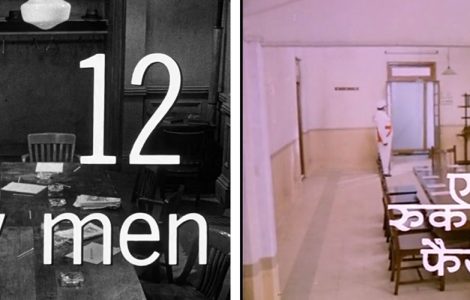
Opening pages of the stage play book
The result was a taut, gripping story about a jury that must decide the fate of a young Hispanic boy who has been accused of murdering his father. Eleven of the jurors believe that he is guilty, but only one man is unconvinced, and what proceeds is a tense debate on the facts of the case, a dismantling of all the ostensibly damning evidence, and also an airing of social stigmas and ingrained prejudices. A play written in the ‘50s will obviously have its attendant problems of representation; it might as well have been called “12 Straight White Men”. There are no women or persons of colour in the jury. But the plot allows for a range of characters fitting various archetypes. This becomes especially clear from the notes on characters and costumes in the stage play adaptation. Juror No. 2 is “a meek, hesitant man who finds it difficult to maintain any opinions of his own,” whereas Juror No. 3 is “very strong, forceful, extremely opinionated […] intolerant of opinions other than his own, and accustomed to forcing his wishes and views upon others.” Juror No. 7 is “a loud, flashy, glad-handed salesman type who has more important things to do than sit on a jury,” and is, basically “a bully, and, of course, a coward”, whereas Juror No. 11 “is a refugee from Europe […] who speaks with an accent and is ashamed, humble, almost subservient to the people around him.” There is the “man of wealth and position” who feels “a little bit above the rest of the jurors and whose “only concern is with the facts in the case”, and there is a “slick, bright advertising man who thinks of human beings in terms of percentages, graphs and polls”. Our hero, Juror No. 8 is a “quiet, thoughtful, gentle man”, a man “who wants justice to be done, and will fight to see that it is.” In other words, he is a lone warrior fighting an uphill battle against a room full of men opposed to him; an underdog fighting for another underdog. These are all tried and tested archetypes and they work really well.
Film Adaptations
The teleplay was adapted into a film directed by Sidney Lumet and starring Henry Fonda. Although the film didn’t fair very well at the box office, it gained almost universal critical acclaim, and is considered one of the most influential films ever made. The American Film Institute ranked it second in its list of the top 10 courtroom dramas of all time, just behind To Kill A Mockingbird (1962), an interesting decision given that an actual courtroom only appears in the film for less than 2 minutes; the rest of the film’s 96-minute running time plays out in an increasingly claustrophobic jury deliberation room. But there is no doubting its influence. It was remade as a television film forty years later by acclaimed director William Friedkin starring George C. Scott, Jack Lemmon and James Gandolfini. In fact, it has been repeatedly remade in various languages in various countries around the world, including Germany, Norway, Japan, Russia, France, China and, of course, India, despite the fact that most of these countries do not even have a judicial system that mandates jury trials.

The Indian version, Ek Ruka Hua Faisla, directed by Basu Chatterjee and starring Pankaj Kapur, M.K. Raina and Annu Kapoor was made in 1986. At a run time of 127 minutes, it is half-an-hour longer than the original, but is a more-or-less faithful translation. And I do mean that quite literally. The jurors have the same personalities and even correspond to the same numbers as in the original. Many of the dialogues are direct Hindustani translations of the original English lines. Even some of the jokes are repeated. The racism and prejudice against Hispanics, immigrants and slum-dwellers displayed by some of the jurors in 12 Angry Men have been cleverly reflected in Ek Ruka Hua Faisla as upper-caste bigotry against minorities and the rising hatred for South Indian immigrants in Bombay that was being fuelled by right-wing groups at the time.

Scenes from 12 Angry Men (left) and Ek Ruka Hua Faisla (right)
The Jury Is Still Out
But the thing to note here is that by 1986, the jury trial was long dead in India. There is nothing in the film to suggest that it is a period film based in the ‘50s when jury trials still happened, and yet there is no explanation for a jury in this case. In the Chinese adaptation, 12 Citizens (2014), the twelve men are assembled from different walks of life to form a mock jury as part of an experiment in a law school, a set-up that makes sense. As we had discussed in our video on the Nanavati trial earlier this year, the East India Company had introduced the jury trial in India as Englishmen considered it their right to be judged by a jury of their peers. However, even under the British Raj, English lawyers felt that Indians did not make good jurors as they were deemed to be irrational, swayed by superstition and religion and incapable of understanding the English language in which court proceedings were conducted. Various law commission reports suggested the abolition of the jury trial, the final one being the 41st Law Commission Report published in 1969. The Nanavati case is widely regarded as the nail in the coffin of the jury trial, which was done away with in the Code of Criminal Procedure, 1973.

Justice Y.V. Chandrachud (Image from supremecourtofindia.nic.in)
The public prosecutor in the Nanavati trial was Y.V. Chandrachud, who would go on to become the Chief Justice of India. It was during his tenure as Chief Justice that he was a part of the five-judge bench that presided over the landmark case of Bachan Singh vs. State of Punjab AIR 1980 SC 898, in which he and three of his brother judges upheld the validity of the death sentence under Section 302 of the Indian Penal Code, 1860. The only dissenting voice was that of Justice Bhagwati who felt that the death penalty was unconstitutional. However, the most important aspect of the judgment was the court’s pronouncement that the death penalty should only be given in the “rarest of rare cases”. In Ek Ruka Hua Faisla as in 12 Angry Men, the judge tells the jurors that if they found the accused guilty, he would be automatically sentenced to death. While this certainly raises the stakes in the films and makes the decision far more difficult, one wonders if a boy would be sentenced to death in India for killing his violent, abusive father keeping in mind the fact that there have been only 56 death penalty cases in Maharashtra since 1947. There are other basic inaccuracies that a layman might miss, but are glaring errors for lawyers who are familiar with the jury system. For example, in Ek Ruka Hua Faisla, one of the jurors is shown casually reading a newspaper just before deliberations begin. Anyone who is familiar with jury trials knows that jurors are completely sequestered during the pendency of the trial and are denied access to newspapers, television and any form of mass media in order to keep them absolutely unbiased. Similarly, while I am not an expert in American criminal law, it seemed improper of the judge in 12 Angry Men to tell the jury that a guilty verdict would necessarily attract the death penalty. It is my understanding that once the jury has given its verdict the judge sets a date for sentencing. Before that date, a pre-sentence investigation is carried out to help the judge determine the appropriate sentence. The pre-sentence investigation may consider the defendant’s prior criminal record, background, possible mitigating circumstances of the crime, the likelihood of successful probationary sentence, and suggested programmes for rehabilitation. It seems a little presumptuous of the judge to offer a foregone conclusion to the jurors before any of this has been done.
Flawed Greatness

Official Portrait of Justice Sonia Sotomayor
But ultimately, there is no point in getting hung up on legal inaccuracies in a film, where the aim is to build tension and keep the audience engaged. While all the characters in the films are interesting, arguably the most important character is mostly invisible: the court. And while 12 Angry Men is a great film that had a positive impact on many people, it is not without its flaws. Justice Sotomayor, who counts the film among her major inspirations, admitted that, as a lower-court judge, she referred to it to instruct jurors on how not to carry out their duties. While speaking about the film in Fordham University in 2010, she said: “I would bring up this movie and explain to them that some of the things that happened, shouldn’t have happened. There’s an awful lot of speculation in the film.” The courtroom proceedings in the film are portrayed as a complete shambles. The defence attorney is described as incompetent and uninterested in the case. However, Sotomayor went further and also criticised the unseen prosecutor, stating that the job of the prosecutor is not merely to convict people, but also to investigate thoroughly beforehand to ensure the defendant’s guilt.

Scenes from 12 Angry Men (left) and Ek Ruka Hua Faisla (right)
Like many other films based on the law, 12 Angry Men is suspicious of the judicial system and reposes more faith in the efforts and ingenuity of one bright individual warrior for the cause of truth. The largely absent courtroom in the film is cast less as a facilitator of justice and more as a hindrance, where lazy, bored and cynical officers of the court do a shoddy job of conducting a trial, subverting the judicial process, making it a farcical exercise. Rather than bringing some clarity to the case, the courtroom manages to mislead all but one man, making it the largest red herring in the history of crime. The twelve men, it would seem, have every right to be angry.

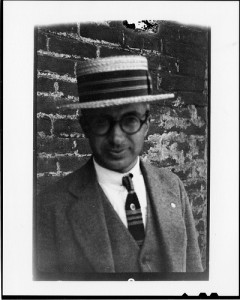
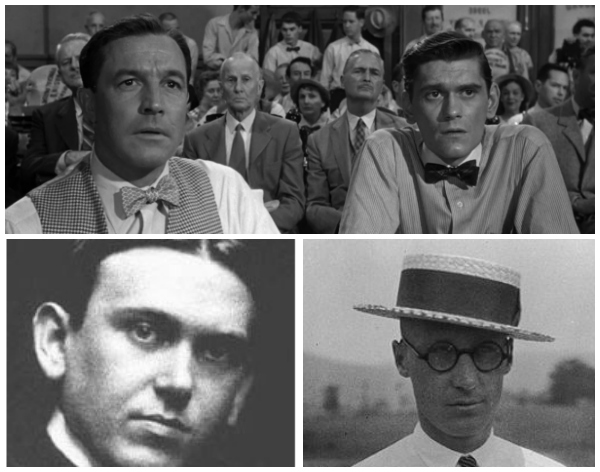
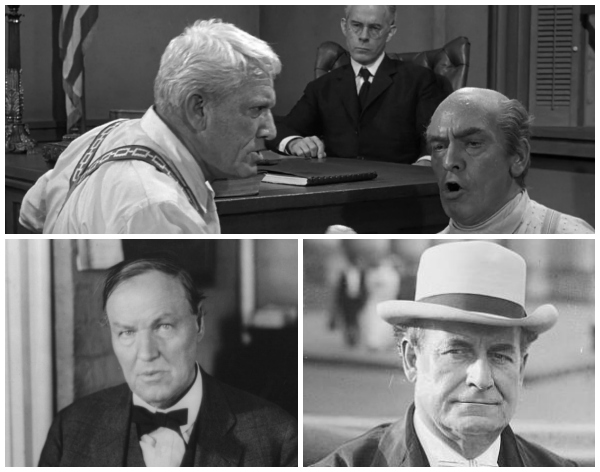
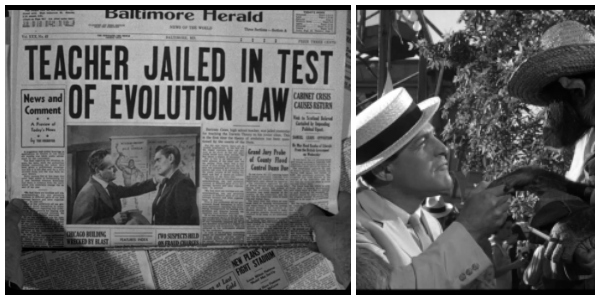
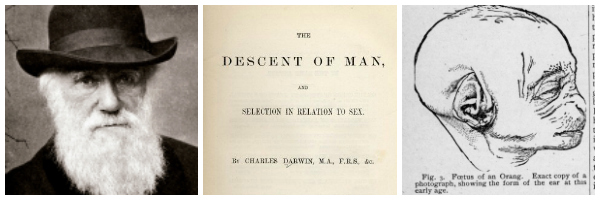

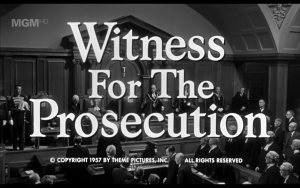 Billy Wilder’s Witness for the Prosecution (1957), based on a play adapted from Agatha Christie’s short story of the same name, is a classic that is considered one of the greatest legal dramas ever made (placed 6th on the American Film Institute’s List of Top 10 Courtroom Dramas), which is a well-deserved accolade, given its clever plot, tight pacing, sharp dialogue and some truly memorable performances by the actors. But what really stayed with me is what the film seemed to say about the relationship between the trial process and justice.
Billy Wilder’s Witness for the Prosecution (1957), based on a play adapted from Agatha Christie’s short story of the same name, is a classic that is considered one of the greatest legal dramas ever made (placed 6th on the American Film Institute’s List of Top 10 Courtroom Dramas), which is a well-deserved accolade, given its clever plot, tight pacing, sharp dialogue and some truly memorable performances by the actors. But what really stayed with me is what the film seemed to say about the relationship between the trial process and justice.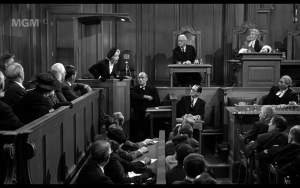 Christine is a German actress who had met Vole while he was serving in the Second World War. She reveals to Sir Wilfrid that she had only married him to get out of war-ravaged Germany, and that her marriage to Vole is actually void as she had already been married to another German man before she had even met Vole. Sir Wilfrid immediately decides not to put her on the stand and tells her that, by law, she cannot give incriminating testimony against her husband. However, during the trial he is shocked when Christine appears as a witness for prosecution. His objection is overruled when it is proved in court that since Christine was already a married woman when she married Vole, she cannot legally be considered his wife – spousal privilege does not apply and she can testify against him. (The law of spousal privilege no longer applies in quite that way in England. While a person cannot be compelled to testify against her/his spouse, s/he has a right to testify if s/he so wishes.) Christine testifies against Vole, denying that he was with her at the time of the murder and contradicting all the statements made in his defence. Vole’s case seems to be completely destroyed. However, just when all hope seems to be lost, Sir Wilfrid gets a call from a woman who, for a substantial sum of money, hands him a bunch of letters written by Christine to a lover, Max, in which she has written about her plot to destroy her “husband”. Armed with this fresh evidence, Sir Wilfrid discredits Christine’s testimony, proving that she has perjured herself. The jury acquits Vole.
Christine is a German actress who had met Vole while he was serving in the Second World War. She reveals to Sir Wilfrid that she had only married him to get out of war-ravaged Germany, and that her marriage to Vole is actually void as she had already been married to another German man before she had even met Vole. Sir Wilfrid immediately decides not to put her on the stand and tells her that, by law, she cannot give incriminating testimony against her husband. However, during the trial he is shocked when Christine appears as a witness for prosecution. His objection is overruled when it is proved in court that since Christine was already a married woman when she married Vole, she cannot legally be considered his wife – spousal privilege does not apply and she can testify against him. (The law of spousal privilege no longer applies in quite that way in England. While a person cannot be compelled to testify against her/his spouse, s/he has a right to testify if s/he so wishes.) Christine testifies against Vole, denying that he was with her at the time of the murder and contradicting all the statements made in his defence. Vole’s case seems to be completely destroyed. However, just when all hope seems to be lost, Sir Wilfrid gets a call from a woman who, for a substantial sum of money, hands him a bunch of letters written by Christine to a lover, Max, in which she has written about her plot to destroy her “husband”. Armed with this fresh evidence, Sir Wilfrid discredits Christine’s testimony, proving that she has perjured herself. The jury acquits Vole.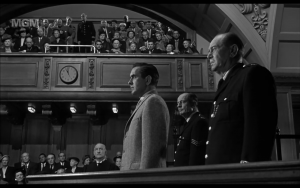 However, as promised, there is a twist in the tale. It turns out that Christine is actually very much in love with Vole. Realising that “no jury would believe an alibi given by a loving wife”, Christine had decided to become a witness for the prosecution and orchestrate a chain of events that would lead to the jurors believing that she had lied under oath to get her husband in trouble. There was no Max – she had painstakingly written fake letters to an imaginary lover to fool the court. The woman who had given the letters to Sir Wilfrid had, in fact, been Christine in disguise (a truly stunning performance by Marlene Dietrich and a fantastic job by the make-up artist; I genuinely had no clue it was her the first time I watched the film). She reveals all of this to Sir Wilfrid after the trial is over along with the chilling fact that Vole had murdered Mrs. French. However, her dreams of reuniting with her “husband” are dashed when Vole, pleased with his acquittal and newfound wealth, tells her that he is leaving her for another woman. When she threatens to go to the authorities and confess to her perjury, he laughs it off, saying he can’t be convicted for the same crime again (we should take another quick moment to note that double jeopardy doesn’t quite work that way – cases can be reopened on the basis of fresh evidence). Enraged at her lover’s infidelity, Christine uses the knife that had been used to murder Mrs. French, to stab Vole to death. When Ms. Plimsoll declares, “She killed him,” Sir Wilfrid corrects her, “She executed him.” As the film comes to an end, he decides to represent Christine in her murder trial.
However, as promised, there is a twist in the tale. It turns out that Christine is actually very much in love with Vole. Realising that “no jury would believe an alibi given by a loving wife”, Christine had decided to become a witness for the prosecution and orchestrate a chain of events that would lead to the jurors believing that she had lied under oath to get her husband in trouble. There was no Max – she had painstakingly written fake letters to an imaginary lover to fool the court. The woman who had given the letters to Sir Wilfrid had, in fact, been Christine in disguise (a truly stunning performance by Marlene Dietrich and a fantastic job by the make-up artist; I genuinely had no clue it was her the first time I watched the film). She reveals all of this to Sir Wilfrid after the trial is over along with the chilling fact that Vole had murdered Mrs. French. However, her dreams of reuniting with her “husband” are dashed when Vole, pleased with his acquittal and newfound wealth, tells her that he is leaving her for another woman. When she threatens to go to the authorities and confess to her perjury, he laughs it off, saying he can’t be convicted for the same crime again (we should take another quick moment to note that double jeopardy doesn’t quite work that way – cases can be reopened on the basis of fresh evidence). Enraged at her lover’s infidelity, Christine uses the knife that had been used to murder Mrs. French, to stab Vole to death. When Ms. Plimsoll declares, “She killed him,” Sir Wilfrid corrects her, “She executed him.” As the film comes to an end, he decides to represent Christine in her murder trial. Films and literature often view the trial process like a game of chess, a self-absorbed exercise in futility with strict rules, prone to becoming an end in itself rather than a means to achieve justice. Like chess, the trial becomes nothing more than a competition of wit and cunning, in which clever practitioners can carefully plan their every move, employing every devastating tactic, strategy and gambit in their arsenal to foil their opponents and achieve victory. The players in the system tend to lose sight of the forest for the trees. The trial itself becomes more important than dispensing justice. You can call this outlook cynical, but is it entirely untrue? I’m not sure it is.
Films and literature often view the trial process like a game of chess, a self-absorbed exercise in futility with strict rules, prone to becoming an end in itself rather than a means to achieve justice. Like chess, the trial becomes nothing more than a competition of wit and cunning, in which clever practitioners can carefully plan their every move, employing every devastating tactic, strategy and gambit in their arsenal to foil their opponents and achieve victory. The players in the system tend to lose sight of the forest for the trees. The trial itself becomes more important than dispensing justice. You can call this outlook cynical, but is it entirely untrue? I’m not sure it is.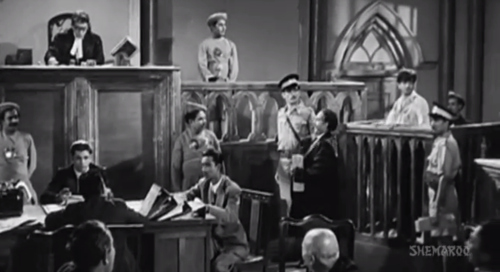 In fact, the film begins in a courtroom. A young man called Raj (Raj Kapoor) is accused of attempting to murder the widely respected Judge Raghunath (Prithviraj Kapoor). In true Shakespearean fashion, Raj’s defence attorney is his lover, Rita (Nargis), who questions Raghunath about his long-estranged wife, leading us into a flashback.
In fact, the film begins in a courtroom. A young man called Raj (Raj Kapoor) is accused of attempting to murder the widely respected Judge Raghunath (Prithviraj Kapoor). In true Shakespearean fashion, Raj’s defence attorney is his lover, Rita (Nargis), who questions Raghunath about his long-estranged wife, leading us into a flashback.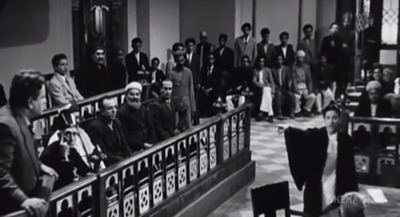 The film makes repeated references to the gulf between the law and the heart. Towards the end of the film, Rita asks Raghunath: “Kya ab bhi aapka dil use beta maanne ke liye taiyar nahin? (Is your heart still not ready to accept the fact that that this is your son?)”. The presiding judge says, “Rita Devi, kanoon dil ko nahin manta. (Rita Devi, the law does not recognise the heart.)”, to which Rita replies, “Janaab-e-wala, dil bhi kisi kanoon ko nahin manta. (Your honour, the heart also does not recognise any law.)” The film seems to say that the courts can be heartless and cold because the people who are given the job of dispensing justice often come from a privileged section of society that divorces them from the real world, rendering them incapable of having genuine empathy for those who are not like them.
The film makes repeated references to the gulf between the law and the heart. Towards the end of the film, Rita asks Raghunath: “Kya ab bhi aapka dil use beta maanne ke liye taiyar nahin? (Is your heart still not ready to accept the fact that that this is your son?)”. The presiding judge says, “Rita Devi, kanoon dil ko nahin manta. (Rita Devi, the law does not recognise the heart.)”, to which Rita replies, “Janaab-e-wala, dil bhi kisi kanoon ko nahin manta. (Your honour, the heart also does not recognise any law.)” The film seems to say that the courts can be heartless and cold because the people who are given the job of dispensing justice often come from a privileged section of society that divorces them from the real world, rendering them incapable of having genuine empathy for those who are not like them.